6 of Spain’s warmest places for winter sun
The Iberian Peninsula is blessed with some of Europe’s best winter weather
Your support helps us to tell the story
From reproductive rights to climate change to Big Tech, The Independent is on the ground when the story is developing. Whether it's investigating the financials of Elon Musk's pro-Trump PAC or producing our latest documentary, 'The A Word', which shines a light on the American women fighting for reproductive rights, we know how important it is to parse out the facts from the messaging.
At such a critical moment in US history, we need reporters on the ground. Your donation allows us to keep sending journalists to speak to both sides of the story.
The Independent is trusted by Americans across the entire political spectrum. And unlike many other quality news outlets, we choose not to lock Americans out of our reporting and analysis with paywalls. We believe quality journalism should be available to everyone, paid for by those who can afford it.
Your support makes all the difference.Tourists jet off to Spain in their millions in the summer, but far fewer consider this part of the Mediterranean for a winter holiday.
Destinations in the Caribbean, South America or Asia may steal the headlines when it comes to winter sun, but Spain’s balmy weather and the absence of peak-season crowds make it the short-haul choice for those in the know.
The country’s southern provinces see temperatures that hover around 20C at certain points throughout winter. Perennial Andalusian favourites like Seville are still sun-drenched from December through to March, with lower temperatures allowing opportunities to explore without the threat of sweltering weather ruining your plans.
Even on the eastern coasts, destinations including Valencia offer opportunities for walks on the beach from Christmas Eve until spring. The Canary Islands, famed for winter temperatures in the mid-20s, may be Spain’s most revered winter sun destination, but read on below for a selection of the others.
Tenerife
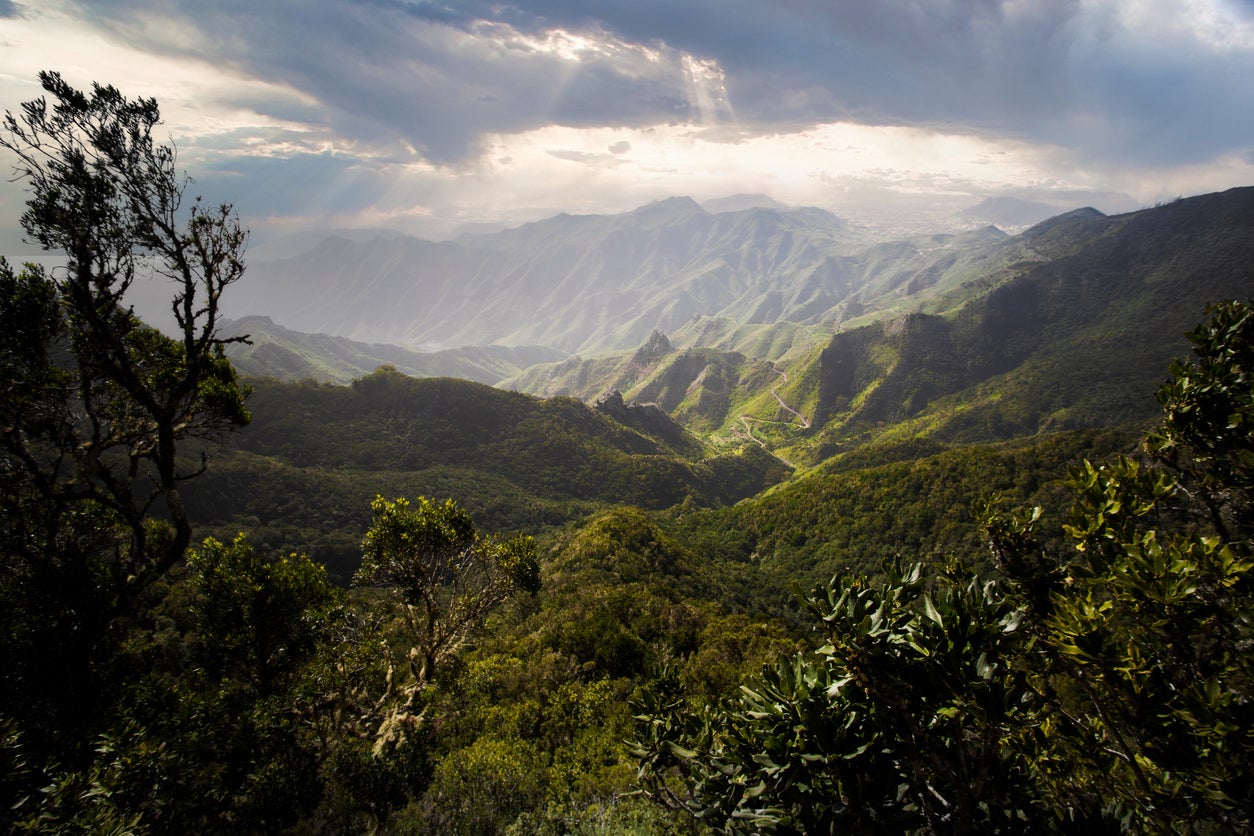
The Canary Islands are the capital of winter sun in Spain, and none of them are more visited than Tenerife. As well as being a popular summer destination, this island receives six hours of sunshine per day between December and February, with temperature averages in these months standing at around 18C (with average highs around 22C).
Many of the island’s highlights are natural sites. It is home to the highest peak in Spain, Mount Teide, an active volcano that towers over the national park of the same name. While a cable car can get you to the top, there are plenty of hiking routes among the red rock and rugged terrain.
If exploring doesn’t appeal, don’t fret – the weather is still good enough to spend the day on the beach too, whether you’re looking for water sports in the coastal resorts of the Costa Adeje or exploration in the capital, Santa Cruz, before lying on Playa Teresitas.
Read more: Spanish islands with sun and volcanic peaks that you should make your next holiday destination
Where to stay
For the ultimate in child-free luxury and relaxation, head to the western coast for Red Level at Gran Melia Palacio de Isora. This is a private section of the wider Gran Melia Palacio, and every room has a private terrace and views. There’s a pool, hot tubs and plenty of peace and quiet.
Read more: Best winter sun holidays a short flight from the UK
Valencia
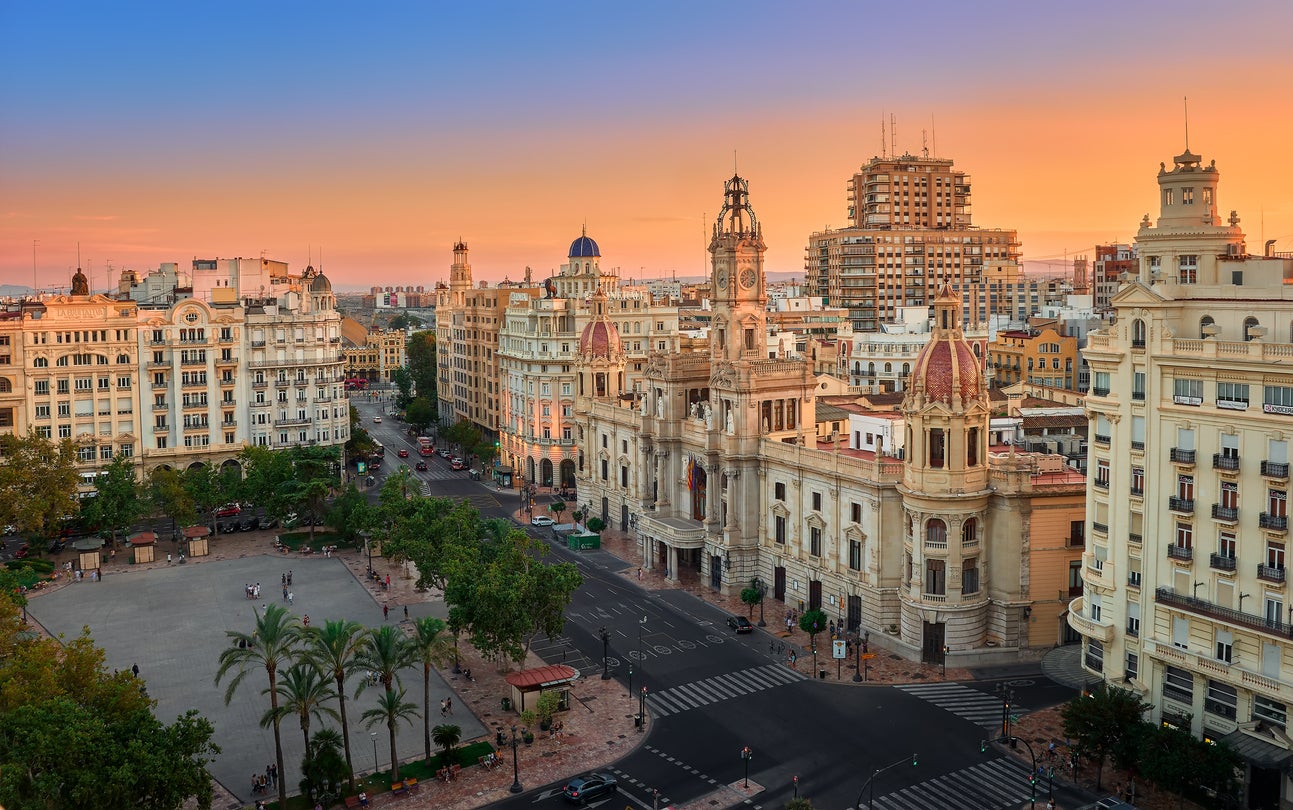
Though cooler than other destinations on this list, Valencia offers pleasant temperatures and plenty of sunshine in the winter months. It is not uncommon to see locals at the beach from December to February, though many stay away from the water despite temperatures hovering around 17C.
This is a city that thrives in winter, as many of its best sights and most popular activities suit slightly lower temperatures. A cycle along the five-or-so miles of the Turia Park is practically a rite of passage, and at the end of the route lies the City of Arts and Sciences, one of Spain’s modern marvels and the site of avant-garde buildings, verdant gardens and Europe’s largest aquarium.
Whether you’re strolling around Ruzafa and Carmen or enjoying some alfresco New Year’s Eve drinks, the temperature is never too hot and rarely too cold. Beach areas may be more suited to promenade strolls rather than afternoon swims, but there’s something extremely satisfying about having lunch on the sands while your friends in the UK are clearing snow from their drives.
Read more: How to be a good British tourist and why Valencia is welcoming us with open arms
Where to stay
The Vincci Palace is one of the best-located hotels in the city, sitting right between the main squares and within easy walking distance of most landmarks. Inside, it’s a classy mix of modern interiors and old-fashioned flair, from the building’s remaining period features to the Art Deco touches in the bar area.
Read more: Best winter sun holidays without the jet lag
Seville
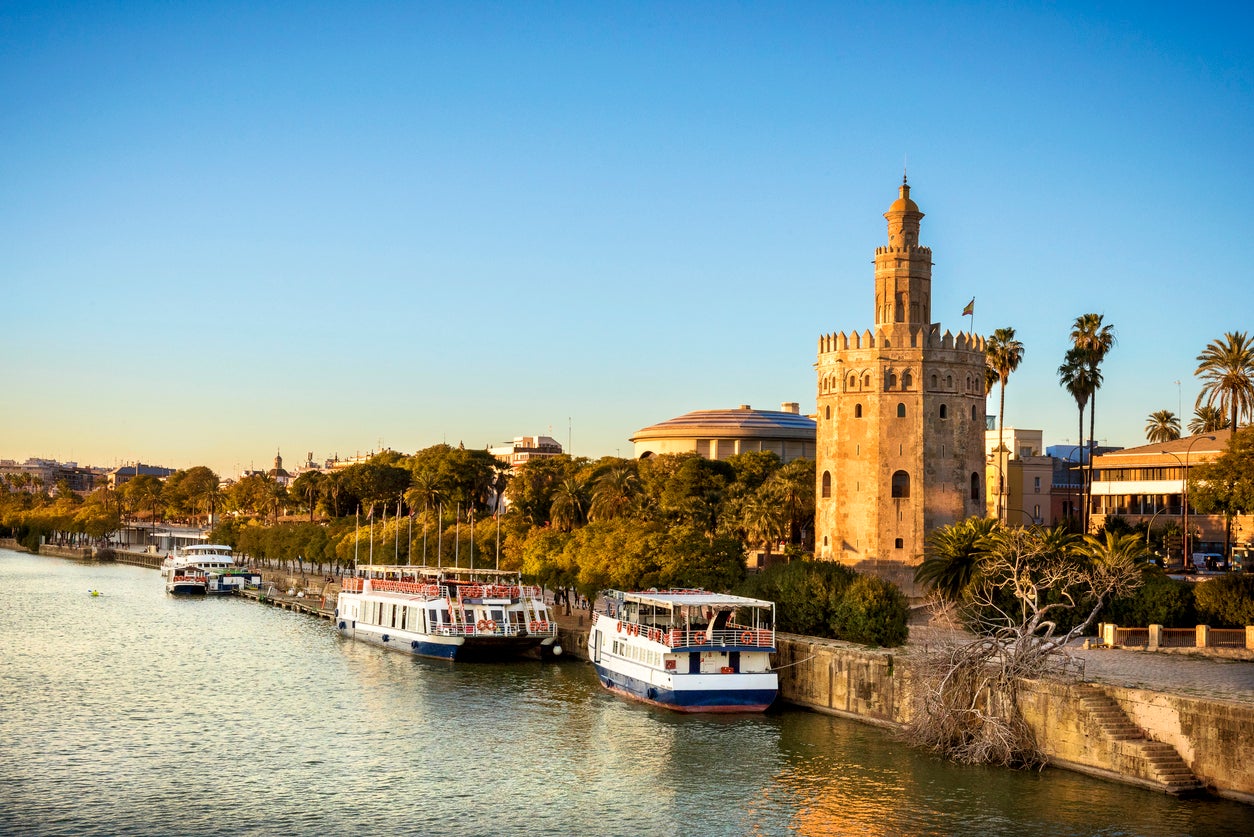
The Andalusian capital is famed for its year-round high temperatures, and while average summer highs of 36C are enough to deter would-be visitors, winter highs of between 16 and 18C are far more welcoming.
A city break in Seville offers an impressively deep range of culture, history and landmarks, from evening flamenco shows to cruises along the Guadalquivir River. Several of the highlights – including the Old Town, cathedral, La Giralda Tower, Moorish Alcazar and Casa de Pilatos – are within an easy walking distance of each other.
On a separate day, make your way to the Maria Luisa Park and the Plaza de Espana, where you can enjoy a relaxed stroll and a short rowboat trip on the canal before admiring the national pavilions that remain around the park, built for the 1929 Ibero-American Expo.
Read more: The best things to do in Seville
Where to stay
The eccentric Hotel Amadeus provides a comfortable stay near the historic centre, less than half a mile from Seville’s main attractions. With a rooftop pool, cosy outdoor and indoor eating areas, characterful period features and plenty of musical touches – including three pianos and a 16th-century harp – this hotel is a special stay in the historic centre.
Nerja
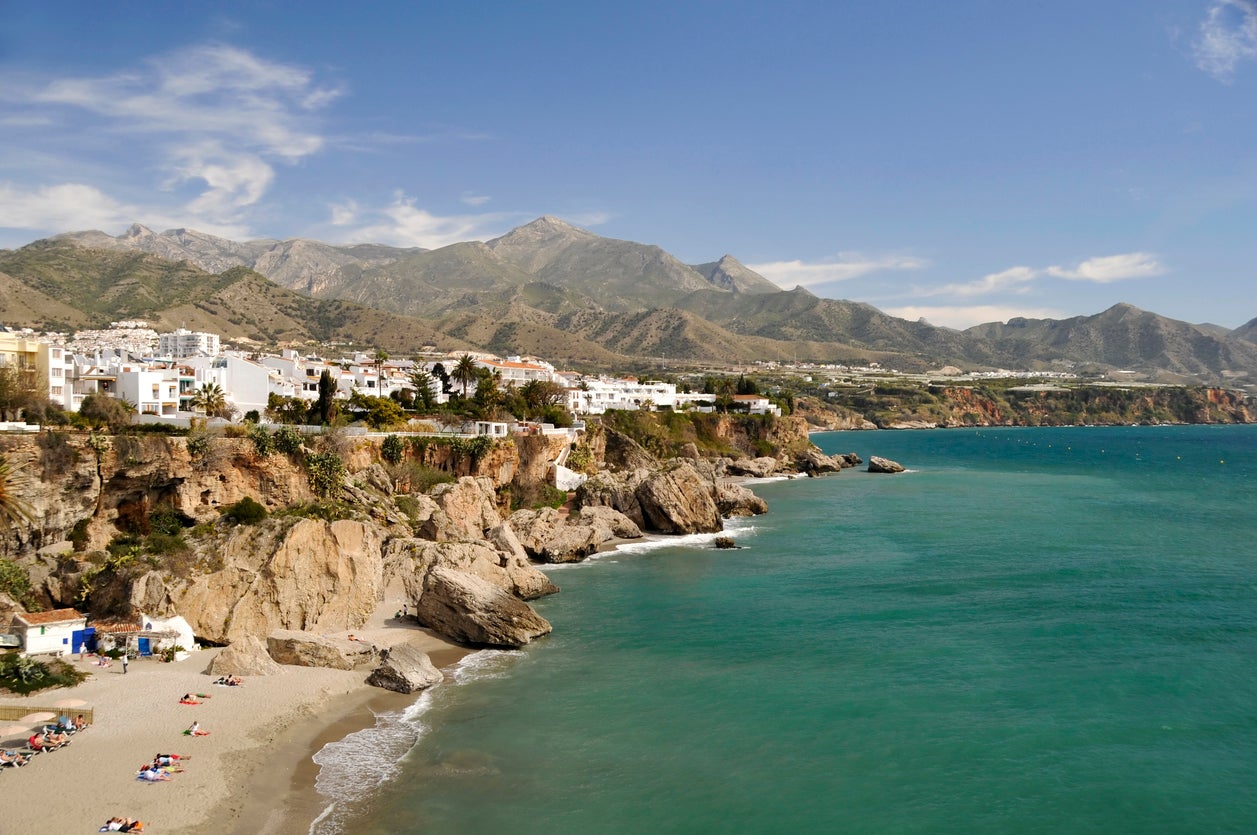
A smaller alternative to Malaga, Nerja lies around 30 miles to the east, perched on a section of cliffs that overlook the Alboran Sea. The town begins on the shores of Salon and Calahonda, rising steadily up through a sea of white-washed, low-lying buildings and palm-tree filled gardens.
Within the narrow, cobbled streets, a plethora of independent shops, affordable-yet-quality restaurants and attractive plazas await, while just above the beach sits the Balcon de Europa, an impressive viewpoint that gives sweeping sea views. One of the town’s most visited sites is its extensive network of caves, which stretch for over three miles and are daubed in paintings that are thought to date back 40,000 years.
Read more: The best cities to visit in Spain – and where to stay
Where to stay
The Hotel Balcon de Europa is built into the rock face in one of the best areas of Nerja for visitors. The hotel offers comfortable, modern rooms, direct beach access and some of the best views in town.
Read more: Where is hot in January?
Lanzarote
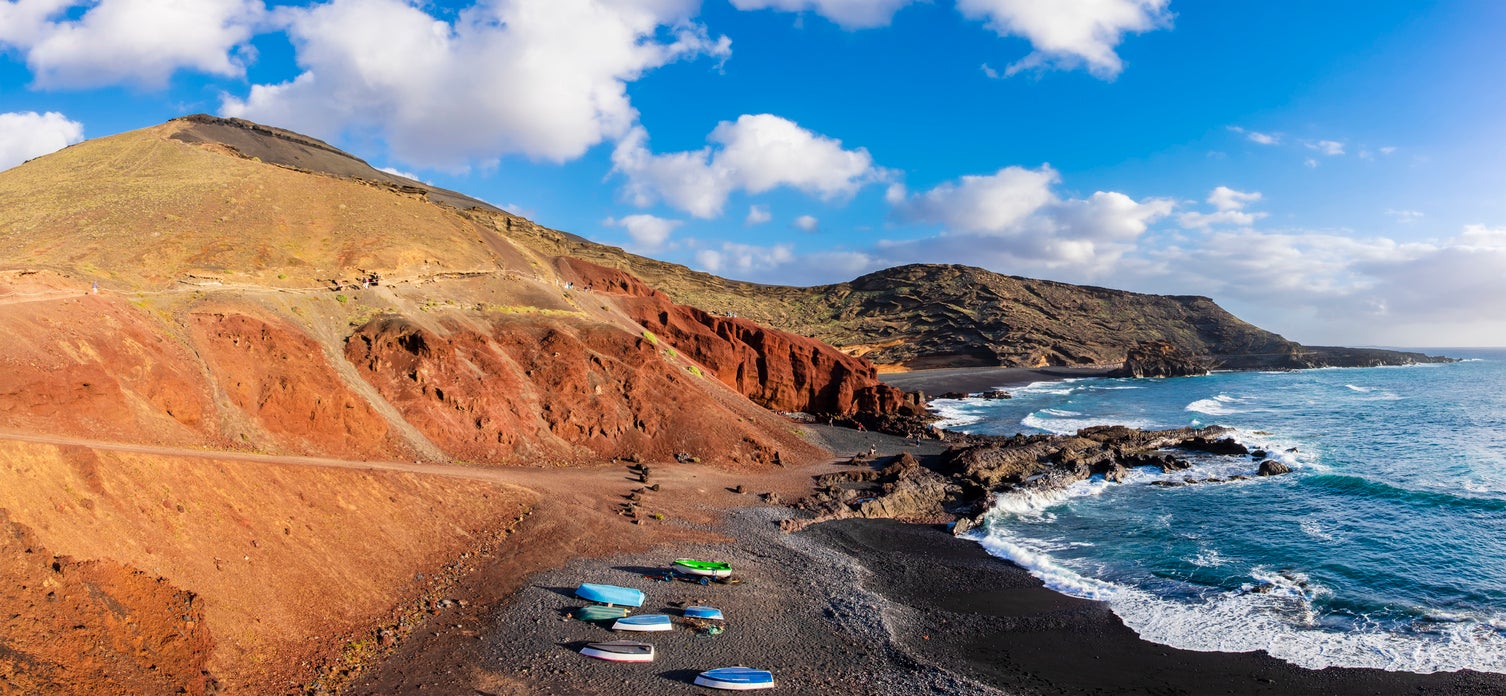
When competing alongside Gran Canaria for the second Canary recommendation on this list, Lanzarote comes out on top due to its amazing natural sites and charming capital. The main city of Arrecife may be smaller than Las Palmas, but its city-side beaches, colonial architecture and lively nightlife make it a worthy competitor.
At the Timanfaya National Park, the sea of red rock and volcanic soil appears almost extra-terrestrial and guided hikes or bus tours are the only ways to explore. Alongside the beaches and the Hervideros cliffs, the Jameos del Agua, an oasis-like landscape that contains a cave network and cultural centre, is the other must-see.
Read more: The best beaches in Lanzarote
Where to stay
The Secrets Lanzarote Resort is a vast, 335-room complex with four outdoors pools, six restaurants and various sports facilities, alongside an extensive spa offering everything from a hairdresser to lava and aloe vera treatments.
Malaga
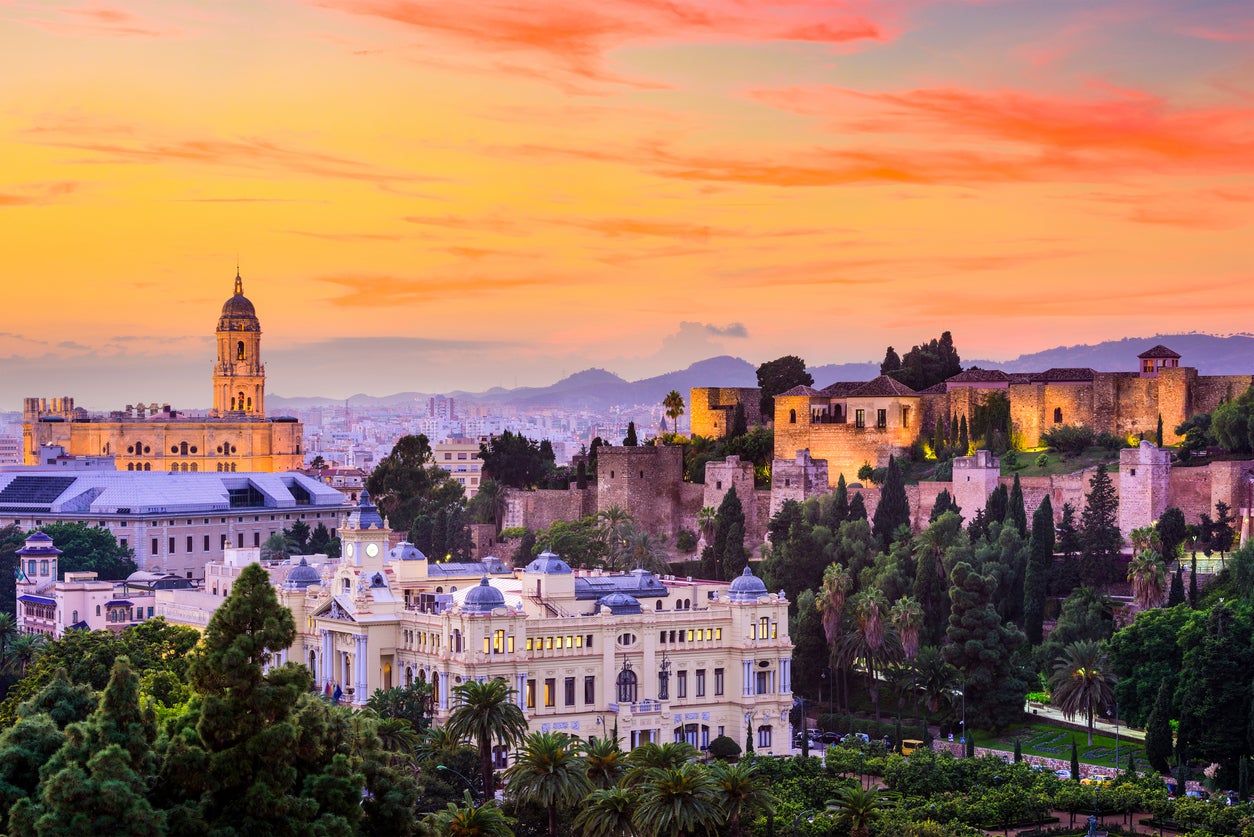
Andalusia’s primary seaside destination is also a great alternative to Seville for a dose of winter sun. Average highs hit 18C, and though the sea may be too cold for most, both the port and the long stretch of city beach, which includes Malagueta and Caleta, are great places to walk, cycle or enjoy a laid-back afternoon meal. The historic centre demands an afternoon spent wandering its wide boulevards, narrow alleys and churro cafes, while La Concepción Historical Botanical Garden and Gibralfaro Castle offer some of the best views.
Art lovers will enjoy the Thyssen Carmen Museum, which showcases a host of 19th-century Spanish art, while the birthplace of Picasso also has a fantastic museum containing over 200 of his works (part of which lies within the house the famed artist was born in). The Alcazaba, Malaga’s answer to Granada’s Alhambra, is the architectural highlight, where stone palaces with horseshoe arches contain gardens and courtyards lined with orange and palm trees.
Read more: The ultimate Spain travel guide
Where to stay
The Only YOU chain has several luxurious hotels around Spain, and its Malaga residence stands out partly due to its marvellous eighth-floor terrace, which features sweeping views towards the Gibralfaro Castle. Inside, a series of on-trend rooms is paired with chic public areas, like those of the Carmen restaurant.
Read more: The best hotels in Tenerife

Join our commenting forum
Join thought-provoking conversations, follow other Independent readers and see their replies
Comments